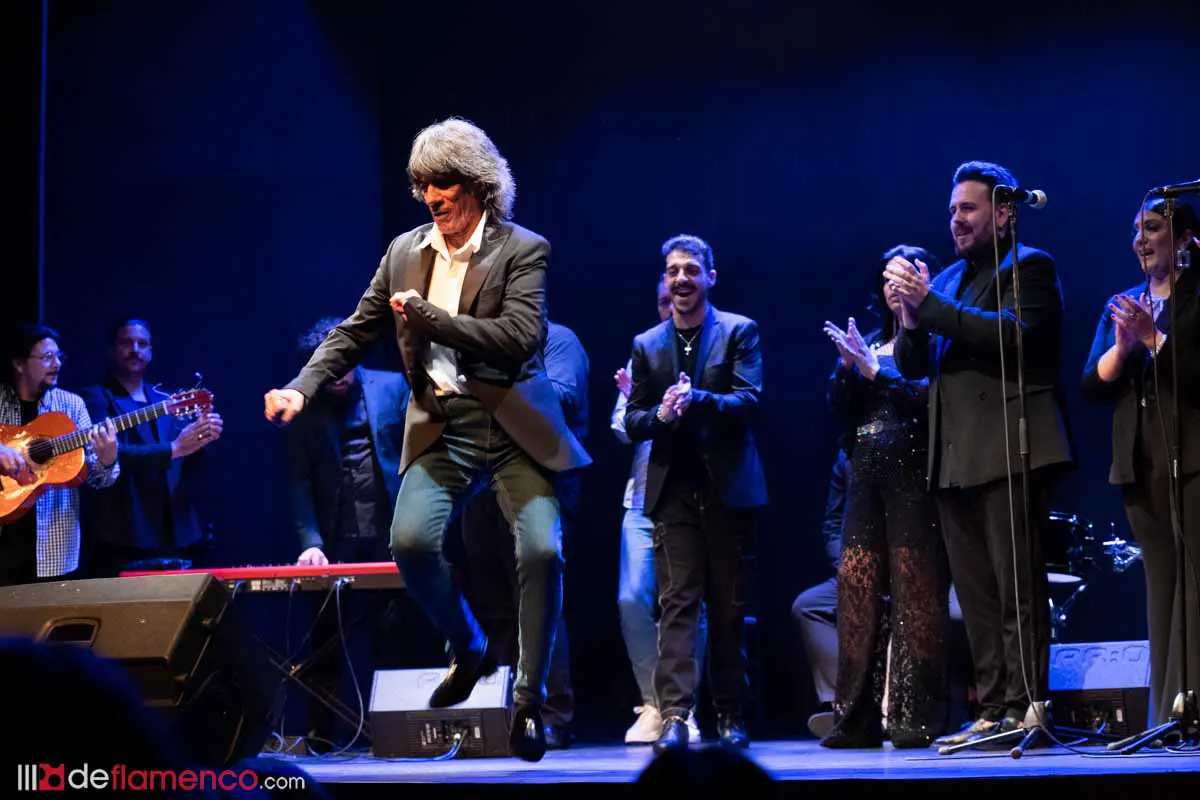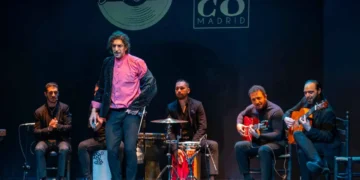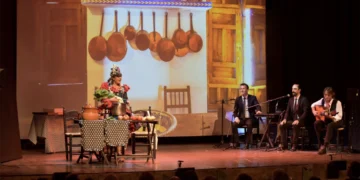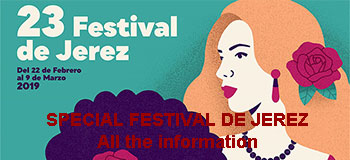First Session of Sonido Caño Roto at Teatro Flamenco Madrid Starring Amador Losada and Family
A night of celebration marked the beginning of the cycle dedicated to Caño Roto, the Madrid neighborhood that today represents one of the most influential schools of flamenco guitar in Madrid: La Academia de El Entri. But the term “Sonido Caño Roto” was born in the 1970s with the album by Los Chorbos titled Poder Gitano. Sonido Caño Roto.
Legend has it that Los Chorbos walked into the CBS offices carrying a Temptations record under their arm and a clear statement:
“We want to sound like this.” And they would immediately show the Temptations album. The band of the moment, filling dance floors around the world with hits like Papa Was a Rolling Stone and its insidious funky guitars.
Across the table sat José Luis de Carlos, who had just returned from New York with a mission: to create a sound similar to Motown or Atlantic but with gypsy artists. De Carlos faced rejection from radio stations—”those gypsy things don’t interest us,” they told him. But he had met Jimi Hendrix, who had a “gypsy” inclination and blended flamenco with psychedelia. When De Carlos later encountered Las Grecas in Madrid, “Gipsy Rock” was born. An album that made its way despite the resistance of the industry at the time. De Carlos assembled a team of outstanding musicians: Pepe Nieto, Eddie Guerin, Johnny Galvao, and Carlos Villa—each with the freedom to play at the edge of rock.
Returning to the legend, De Carlos had flamenco experience; in Jerez, he had produced a classical flamenco album that remains a reference for the genre, and he had signed Enrique Morente for Hispavox. Morente lived in Carabanchel and recorded A la hora de la muerte with Amador Losada and Manzanita, a song originally recorded by Antonio El Kalifa for the Acropol label in 1974. According to El Kalifa, Morente transformed it into a masterpiece the following year—1975, the year Franco died. That same year, Morente took the young guitarist Manzanita to Mexico, and Mexico transformed Morente. Along the way, one would like to believe it also transformed Manzanita. Verde que te quiero verde.
LOS CHORBOS
Back to the legend. Los Chorbos wanted to sound like The Temptations, and what they came up with was Vuelvo a casa, a song that has undergone as many flamenco reinterpretations as funky ones. A hit. To make things clear, the LP was titled Sonido Caño Roto and also bore the subtitle Poder Gitano, undoubtedly inspired by “Black Power.” The back cover featured a neorealist photo of children posing in Caño Roto. “Look, this is Aurora,” her mother told me when Amador Losada’s daughter recorded the legendary Besos de Caramelo with Ketama (Nuevos Medios, 1990). The album was successful, and Los Chorbos appeared on several TVE programs wearing bell-bottom pants, proclaiming Vuelvo a casa. What followed was De Carlos proposing to American jazz bassist David Thomas to produce Manzanita’s solo project. Thomas asked himself: “Do I know anything about flamenco?” No. Therefore, he accepted the project, which was titled Poco ruido y mucho duende (CBS, 1978). Verde que te quiero verde.
Franco was dead.
THE LEGEND CONTINUES
Teatro Flamenco Madrid fills up with gypsies to celebrate the Sonido Caño Roto. Dancer Kelian Jiménez appears and explains that once a month, they will present a family of artists from Caño Roto, and tonight, it’s the night of Losada. Los Chorbos’ music plays. Amador Losada, 75 years old, a member and the only active member of Los Chorbos, takes the stage and sings a song. Then a guitarist steps up—it’s David Cerreduela, one of the gems of Caño Roto guitar. Take note of the names, past, present, and future, because this is the realm of El Entri’s academy. Caño Roto is home to El Viejín, Jesús de Rosario, and Kilino Jiménez. Talents not widely recognized. The next event is on May 18, featuring the Cerreduela family. We know David because he played alongside Enrique Morente, and because his style is like no one else’s.
A band reappears for Kelian’s bulerías dance. At my side is David El Indio (Gipsy Power Band and Vetusta Morla), enjoying the rhythm of the cajón and drums and the singing of Eleazar Cerreduela—”he reminds me of Guadiana.” Kilino Jiménez’s guitar starts off metallic, but as the bulerías build to a boil, echoes of soul, funk, and The Temptations emerge.
The band changes, and Samara Losada appears in a hat and sparkles. She sings rumba and ballads that, at times, recall her sister Aurora, who lives in the south and had another artistic commitment. Remember that Aurora recently recorded with Rubén Blades on the tribute album to Ray Heredia. And then comes the great moment when Amador Losada returns, with his daughters singing backup, delivering a moving version of Vuelvo a casa, somewhere between spoken word and slow rap. Memory has been safeguarded, and so has the future. For the encore, two young girls take the stage—small in size but giants in artistry—and the night ends in a full-throated farewell, with Amador sounding better than ever.
Fotografías @Manjavacas.flamenco




















You must be logged in to post a comment.